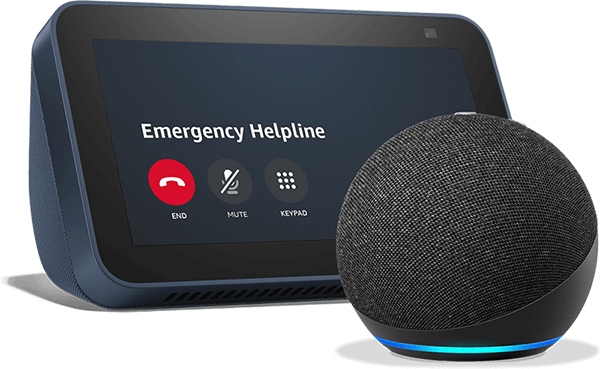
Exercise and intentional movement are important for people of any age. For seniors especially, movement can improve their quality of life, enhance independence, improve mobility, and even boost confidence and self-esteem. However, it can feel more challenging to keep up with movement goals as we age due in part to chronic conditions and joint stiffness, pain, or decreased mobility that can come naturally with age. Whether you’ve been active most of your life or are committing to scheduling more exercise into your routine, you can immediately notice the benefits of movement. You don’t have to be an expert or set lofty training goals to get those benefits. Here are a few ideas for exercises for seniors that might inspire you to move more.
Walking (with or without an assistive device)
Perhaps the most perfect exercise for seniors is walking. Not only is it less intimidating to start than jogging or running, but walking also comes with many benefits, including improved strength, balance, and joint flexibility. It can also decrease blood pressure and the risk of depression and anxiety.
All you need to get started with a walking plan is a sturdy and comfortable pair of walking shoes and a safe place to walk. You can use a treadmill if you have one. You can also use your walker or cane if you have one and your doctor says that walking (even just around the house, to start) is safe.
Outdoor walking improves on benefits as you also get the advantages of being in nature and breathing fresh air. Try heading out for a walk outside at least once per day, starting with a stroll around the block before slowly increasing your distance.
Balance exercises for seniors
Working on your balance is a wonderful way to meet your movement goals and decrease your risk of falling at home. Before you begin any balance exercise program, ensure you’ve spoken to your physician to get clearance and ask for a referral for physical therapy. A physical therapist can evaluate your challenges and needs and give you specific balance exercises you can complete at home to enhance your stability.
A typical balance exercise regimen takes less than 30 minutes to complete, and you can do it daily. You just need sturdy shoes, something to hold on to, and an open mind. Remember, if you have to step out of an exercise to regain your balance, that is entirely normal. Just be sure that you are safe as you perform the exercises. You can also find balance exercise videos on streaming platforms like YouTube.
Strength training exercises for seniors
It is never too late to reap the benefits of strength training, which can include movements with weights or only your body weight. The National Institute on Aging reports that older adults can maintain and increase their muscle strength by incorporating strength and resistance training once or twice weekly. Strength training builds bone density, manages weight, improves joint health, and boosts confidence.
You don’t need to lift big weights in a gym or purchase a squat rack to keep in your spare bedroom. You can benefit from body-weight exercises as well as lifting dumbbells, kettlebells, or household objects like water bottles or soup cans. Resistance bands are another option. Before you purchase any equipment, ensure that you have sturdy shoes, and focus on body-weight exercises.
SilverSneakers offers live and on-demand videos online with excellent strength training components. Some health insurance policies will even offset the cost of membership.
Activities you wouldn’t expect to be considered exercise
You don’t have to attend a workout class or go for a job to consider movement exercise. Everyday activities and hobbies can also count as physical activity. Here are a few of our favorite common movements you can do that can count toward your daily movement goal.
Household tasks
Though chores aren’t everyone’s favorite activities, they can be a great way to work in physical movement to your everyday life. Doing the dishes requires you to stand for at least a few minutes at a time; Sweeping engages upper body muscles; Doing the laundry requires you to squat to pick up the laundry basket and your core and upper body muscles to carry it from the bedroom to the washing machine. As long as you can do these functional movements safely, you can get more enjoyment out of completing household chores because they serve two purposes: You can maintain your home and get your body moving.
Dancing
Body movement can be fun and freeing, as when you turn on your favorite music and dance around your home. Whether you consider yourself to have rhythm or not, you can experience the joy of dancing to your favorite song anytime.
Try to dance while cooking in the kitchen to boost your energy during an afternoon slump or while brushing your teeth and getting ready for the day. You’ll notice a difference in your joints as well as your mood. Of course, if you’d like a more structured program involving dance, check out a Zumba Gold class online or other in-person dance-focused exercise classes at your local senior center or recreation center.
Gardening
Not all movement needs to be rooted in exercise. Many chores you do around the house or hobbies you love can help you reach your daily movement goals. Gardening is an excellent example. Whether walking around the house carrying a watering can or bending at the hip to deadhead your plants, you are moving and working on your mobility.
If you’re already an avid gardener, consider intentionally noticing how much movement the hobby brings you. Then, find ways to increase that movement. Can you walk to the hose that is farther away from the garden to fill up your watering cans? Can you try to get up from kneeling in your garden bed without using your hands?
If you’re not a gardener, why not try to pick up the hobby? It’s a great way to get outside and keep moving throughout the spring, summer, and fall. Start small with container gardening before moving up to a full bed of vegetables or flowers.
Remember to ease into your daily routine as you start incorporating more movement. Set a small goal and work on that for a month before adding something new. Always keep an eye out for movement opportunities that you look forward to, as you’ll be more likely to keep up with an exercise plan if you enjoy it. We hope these ideas for exercises for seniors inspire you as you set out to move more and keep yourself healthy and happy.








